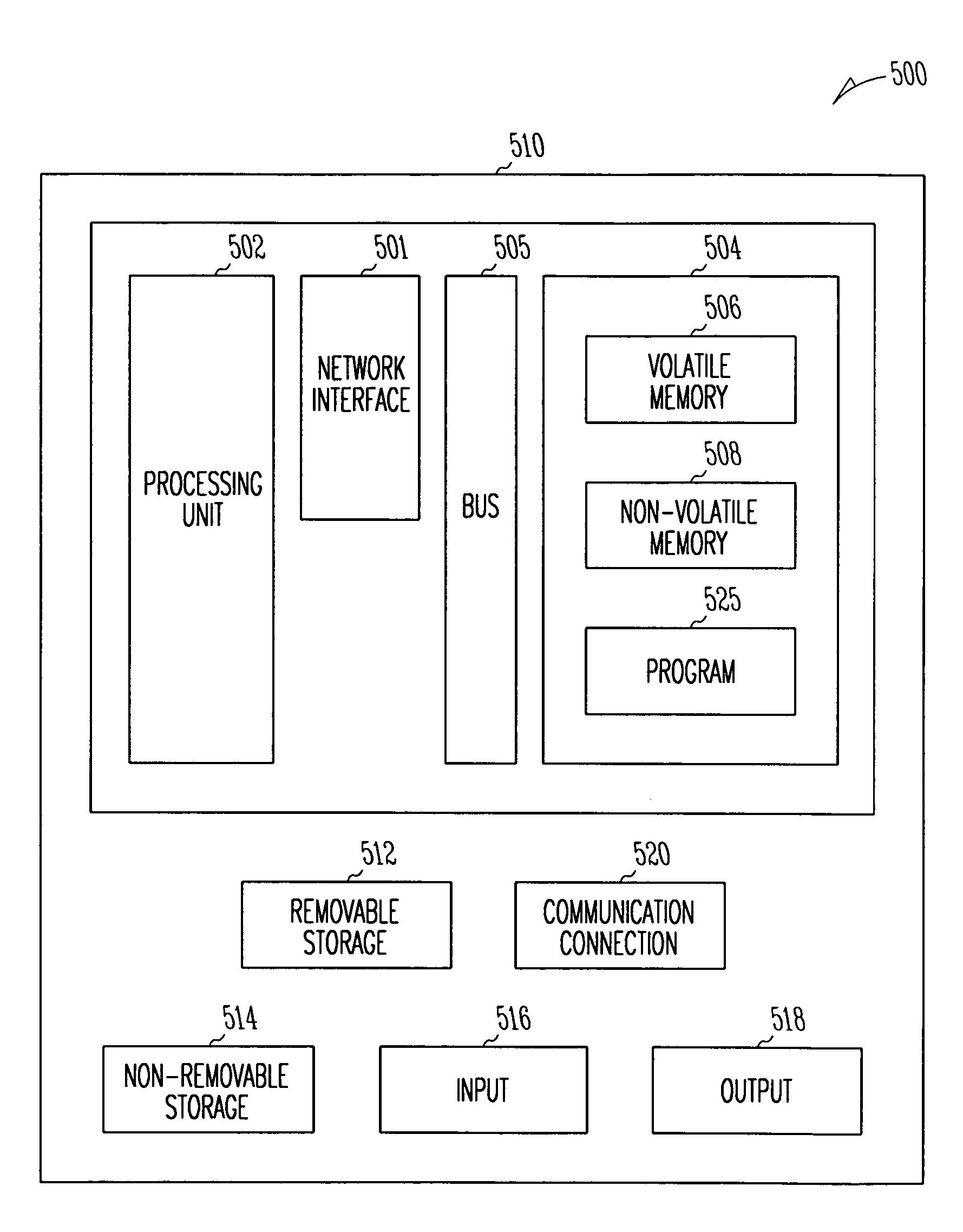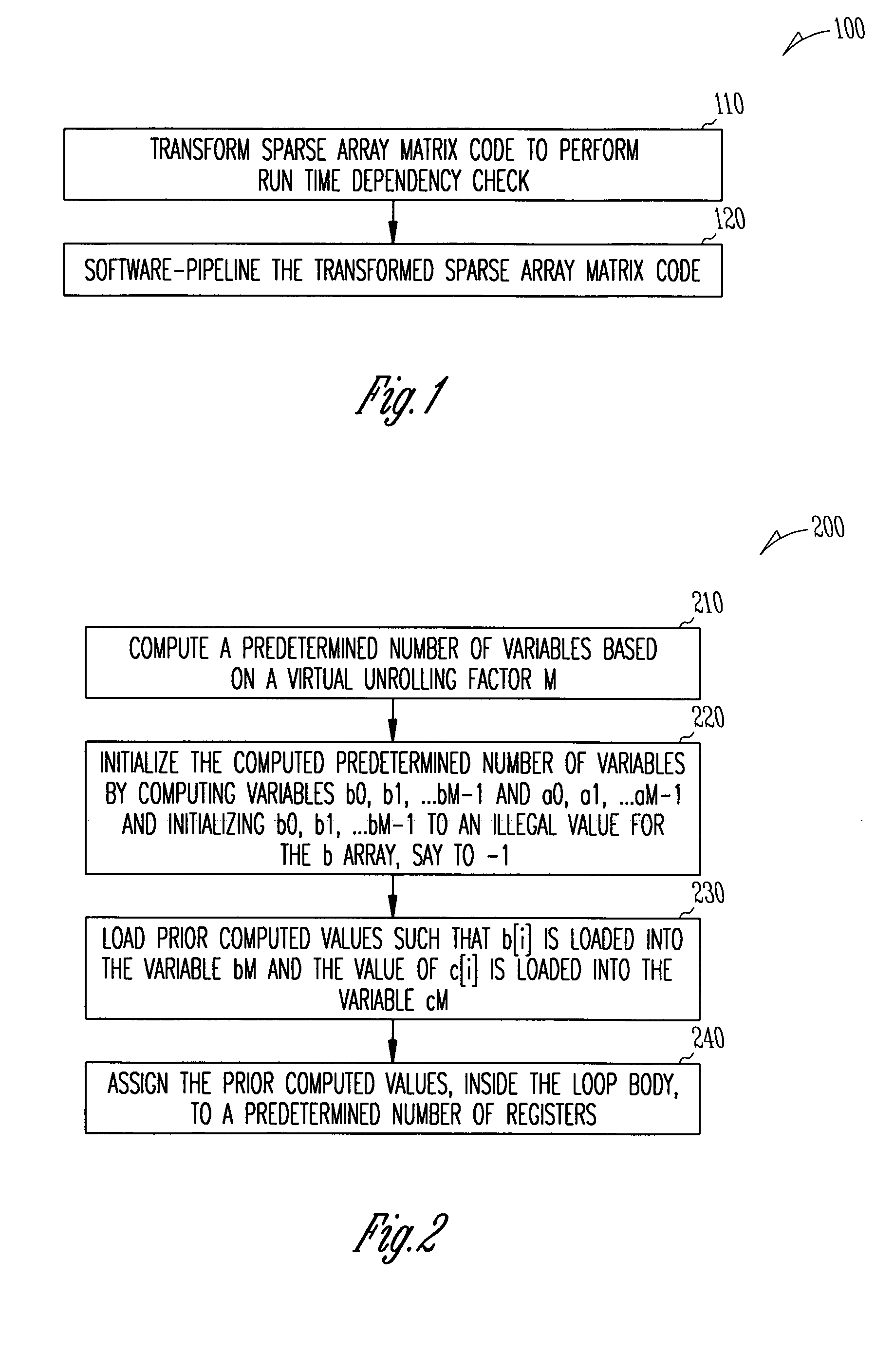System and method for software-pipelining of loops with sparse matrix routines
a software-pipelining and routine technology, applied in computing, instruments, electric digital data processing, etc., can solve problems such as difficult statically disambiguating references to indirectly accessed arrays, and inability to adapt to such types of code suitable optimization strategies,
- Summary
- Abstract
- Description
- Claims
- Application Information
AI Technical Summary
Problems solved by technology
Method used
Image
Examples
Embodiment Construction
[0014]The various embodiments of the present invention provide methods, systems and programs for software-pipelining indirectly indexed arrays, such as sparse arrays / matrices so that recurrence initiation interval is reduced and thereby improving instruction-level parallelism. The technique is presented as a high level transformation of loops.
[0015]In the following detailed description of the embodiments of the present invention, reference is made to the accompanying drawings that form a part hereof, and in which are shown, by way of illustration, specific embodiments in which the present invention may be practiced. These embodiments are described in sufficient detail to enable those skilled in the art to practice the present invention, and it is to be understood that other embodiments may be utilized, and that changes may be made without departing from the scope of the present invention. The following detailed description is, therefore, not to be taken in a limiting sense, and the ...
PUM
 Login to View More
Login to View More Abstract
Description
Claims
Application Information
 Login to View More
Login to View More - R&D
- Intellectual Property
- Life Sciences
- Materials
- Tech Scout
- Unparalleled Data Quality
- Higher Quality Content
- 60% Fewer Hallucinations
Browse by: Latest US Patents, China's latest patents, Technical Efficacy Thesaurus, Application Domain, Technology Topic, Popular Technical Reports.
© 2025 PatSnap. All rights reserved.Legal|Privacy policy|Modern Slavery Act Transparency Statement|Sitemap|About US| Contact US: help@patsnap.com



